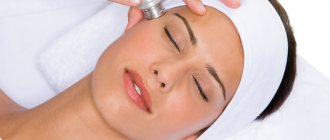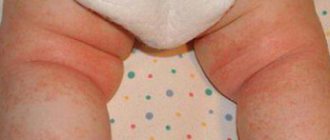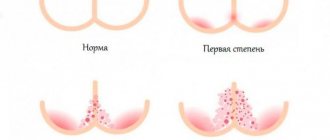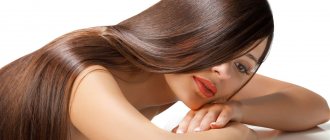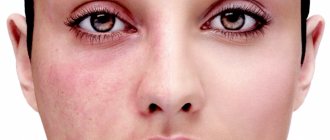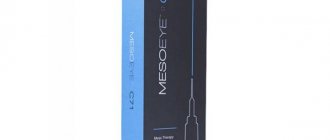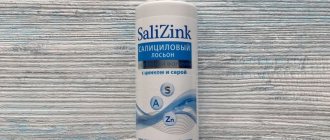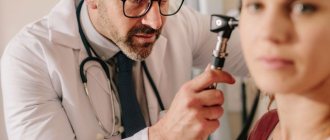In France, more than 100 years ago, physiologist Jacques Arsene D'arsonval made a discovery - high-frequency current has a positive effect on the body. His surname later gave the name to the first Darsonval device and the medical procedure - darsonvalization. Today, the method of treatment with the device is known not only in medicine, but also in cosmetology. It can be successfully used independently at home. We tell you what the device can be used for, what its action is based on, what effect darsonval has on the skin, hair and body, and why you should have it at home.
What is Darsonval
Modern Darsonval is a portable physiotherapeutic device that acts on the skin using high-frequency pulsed current.
The method of exposure to alternating high-frequency current, or darsonvalization, was named after Jacques Arsene D'Arsonval (06/08/1851–12/31/1940), a physiologist from France. Back in 1891, the scientist noticed a curious feature of high-frequency current: its passage through the body of animals did not damage tissue and even had a healing effect.
At home, Darsonval is used to solve cosmetic problems. The device effectively copes with:
- enlarged pores;
- fine wrinkles;
- acne;
- acne;
- acne;
- comedones and other unpleasant phenomena.
The Darsonval device is used in cosmetology to combat skin rashes
How Darsonval helps with skin rashes
When Darsonval works, ozone is produced, which has a bactericidal effect, resulting in unfavorable conditions for the formation of various types of rashes. Darsonval has the following beneficial properties:
- pulls out from subcutaneous tissues and destroys harmful bacteria;
- restores damaged vessels;
- prevents acne from spreading further;
- heals acne and post-acne scars due to increased collagen production;
- helps normalize the functioning of the sebaceous glands;
- relieves swelling.
Video: the operating principle of Darsonval and the purpose of its attachments
Advantages of the Darsonval procedure
Darsonvalization provides sufficient nutrition to the deep layers of the skin, which cannot be said about many other rejuvenation methods.
The procedure activates the production of your own elastin and collagen fibers. Along with this, sebum production decreases and the activity of pathogenic microorganisms noticeably decreases. Thus, darsonval improves the general condition of tissues, helps to narrow pores and heal acne scars.
With hair loss and increased fragility, the scalp also needs nutrition. In this case, darsonvalization starts metabolic processes and activates “dormant” hair follicles, which has a positive effect on the thickness and health of hair. As a result, their structure is restored, smoothness and silkiness appear.
Features of darsonvalization of the face in the treatment of acne
To properly use Darsonval to combat skin imperfections, you need to know several nuances.
Types of comedones
Acne is a skin disease that occurs due to disruption of the pilosebaceous ducts. The disease is caused by propionic bacteria (or acne), which can reproduce only if there is no access to oxygen.
Blackheads are either blackheads in the pores or white bumps on the skin.
Acne comes in the form of papules (red, inflamed bumps without pus inside) or pustules (inflammatory foci with pus inside). Usually they are present on the face at the same time.
Comedones are small, unsightly dots that fill the openings in the pores. Most often they are localized on the nose and chin, and appear due to clogging of the sebaceous glands. There are two types of comedones: open and closed.
Open comedones have a dark color due to oxidation by air, a conglomerate of sebum, microorganisms and dead cells accumulating on the surface
The appearance of comedones indicates hormonal imbalance, chronic diseases, abnormal nutrition or stress.
Closed comedones can become inflamed and develop into purulent pustules
How to use the device for the treatment of acne, blackheads and comedones at home
For the darsonvalization procedure to combat the listed rashes, a mushroom-shaped electrode is used. Sessions last 3–5 minutes and are held every other day for 10–15 days. During treatment, the following rules must be observed:
- Before the session, be sure to wipe the skin with an antiseptic solution or a special tonic. The use of alcohol products is not allowed to avoid burns;
- it is necessary to choose such a current strength that there is no discomfort: warmth and a slight tingling sensation should be felt;
- the choice of exposure method, contact or non-contact, will depend on how actively the inflammatory process on the skin develops.
After a session, sensitive patients often experience slight redness or slight swelling at the site of treatment, but they soon disappear without a trace.
Most often, a mushroom-shaped electrode is used to treat rashes on the face.
During treatment with Darsonval for all of the above skin rashes, it is necessary to properly care for the skin and follow these rules:
- Wash your face morning and evening with mild cleansers;
- Treat the skin with preparations containing benzoyl peroxide or azelaic acid 2 times a day;
- For dry skin, creams are more suitable, and for oily skin, it is better to use products in the form of gels.
More detailed recommendations for caring for problem skin, indicating specific medications, will be given by a dermatologist-cosmetologist, who in any case should be consulted before treating yourself with Darsonval.
For acne and pimples without pus, the contact method is used, when the electrode comes into contact with the skin. The nozzle is continuously and slowly (at a speed of 2–3 cm/s) moved across the entire area of exposure using translational or rotational movements. In painful areas, damaged areas of skin with ulcers, wounds or seals, the electrode is paused for a few seconds. Before the session, it is recommended to apply talc to the areas to be treated for better glide. If the skin is dry, cosmetologists advise protecting it with a special cream so as not to dry it out even more. The impact area should not exceed 500–600 cm2.
The contact method implies that the electrode is in contact with the skin
To relieve pain in more severe manifestations of acne, accompanied by inflammatory processes on the skin, it is recommended to use a non-contact method. In this case, the electrode attachments do not come into contact with the skin; the device operates at a distance of 5 millimeters from it. The spark discharge cauterizes the skin at inflamed points, which promotes tissue renewal in these areas.
The non-contact method is used to treat severe acne.
The procedure for combating comedones with Darsonval is carried out non-contactly with a drop-shaped electrode. To remove a closed comedon, you need to hold the nozzle over the affected area for 10-15 seconds. The bad news: it's quite painful, especially if your skin is sensitive. The procedure must be carried out every day. The visible effect is achieved in 10–15 sessions.
A drop-shaped electrode is used to combat closed comedones
Safety rules for darsonvalization
The key to the safety of darsonvalization at home is strict adherence to the operating rules of the device, which include:
- comfortable posture during the procedure (sitting or lying down);
- furniture and floors should not be conductive, but preferably wooden;
- there should be no radiators, radiators, water pipes, or ceramic surfaces within a radius of one and a half meters;
- It is not allowed to use the device outdoors, as well as in wet rooms (bathrooms, swimming pools, showers);
- You cannot combine the use of two or more electrical appliances at the same time in one session (for example, a hydromassage foot bath and Darsonval).
- Do not use the device if the cord, switch, or glass electrode body are damaged in any way;
- Do not cover the device with a blanket, pillow, blanket, etc., otherwise there will be a risk of overheating, which can lead to a fire;
- It is prohibited to use Darsonval near spray aerosols (for example, in hairdressing salons);
- It is unacceptable to carry out the procedure in a state of drowsiness, alcohol or drug intoxication, or under the influence of tranquilizers;
- The device should be stored in a warm, dry, clean place that children cannot reach;
- Avoid direct sunlight, keep away from heating devices.
- glass electrodes must be handled with special care, avoiding impacts and falls;
- do not leave the device turned on if it is no longer in use;
- turn off the device immediately after the session ends;
- Before each procedure, be sure to treat the device body and nozzle with an antiseptic solution.
conclusions
- Darsonval helps against acne without risk to the body.
- The device has many positive effects in the treatment of rashes, acne, and inflammation.
- Dermatologists recommend similar therapy for most skin diseases.
- There are some peculiarities when treating acne with this method. Additionally, acne creams and gels can be included.
- Methods of application during the treatment of different types of even similar problems differ significantly.
- To avoid side effects, you must follow the rules of use, directions and recommendations.
Contraindications to darsonvalization
Contraindications to the use of Darsonval are:
- oncology;
- benign formations (fibromas, papillomas, lipomas) in the areas of intended exposure;
- heart problems;
- presence of a pacemaker;
- elevated temperature;
- thrombophlebitis;
- epilepsy;
- tuberculosis (in active form);
- intolerance to electric current;
- the presence of a vascular network in the perineum and/or lumbar region;
- impaired blood clotting and tendency to bleeding, as Darsonval increases blood flow;
- thyroid diseases;
- pregnancy (due to the risk of increased uterine tone).
In all other cases, Darsonval can be used. It is necessary to undergo treatment in courses of 10 to 15 days; it is recommended to repeat them 3–4 times a year.
Photos "before" and "after"
Subcision is the most effective way to treat acne scars. The result “before” and “after” of one procedure. Surgeon: Vasiliev Maxim.
Correction of deep scars. Photos "before" and "after". Completed by: Vasiliev Maxim.
Laser resurfacing of post-acne scars. Performed by dermatocosmetologist Elena Vlasova.
Side effects
If the device is handled incorrectly, undesirable consequences may occur:
- the appearance of facial hair - the action of the current stimulates the growth of the bulb, and light fluff can become tougher and more noticeable due to the strengthening of the roots.
- development of embryo pathologies in pregnant women;
- recurrent stroke - the use of the device for brain disorders is not recommended due to increased blood circulation;
- skin reactions - in people sensitive to electric current, darsonvalization sessions can cause allergies.
There should not be a feeling of pain during the procedures, and if this happens, then consultation with a specialist is necessary. It is advised to use the device with extreme caution at home. In case of any negative manifestations, only a doctor can help reduce the risk of their occurrence.
What is the secret of successful operation of the device
Under the influence of high-frequency pulses, a slight coronary discharge occurs, resulting in the formation of a small amount of ozone. During operation of the device, the vessels dilate and blood flow increases. The procedure is painless. Modified oxygen is known to have powerful bactericidal properties. It destroys harmful bacteria. The gas disinfects the skin, but without the effect of chemical damage, as when applying some antiseptic solutions. It is on this principle that acne treatment is based.
